site search
online catalog
“CAPTURED AND COLLECTED” COLT SPECIAL MODEL 1861 RIFLE DATED 1863, FROM THE ESTATE OF CS VETERAN JOHN POSEY CRIGGER, 45th VIRGINIA

Hover to zoom

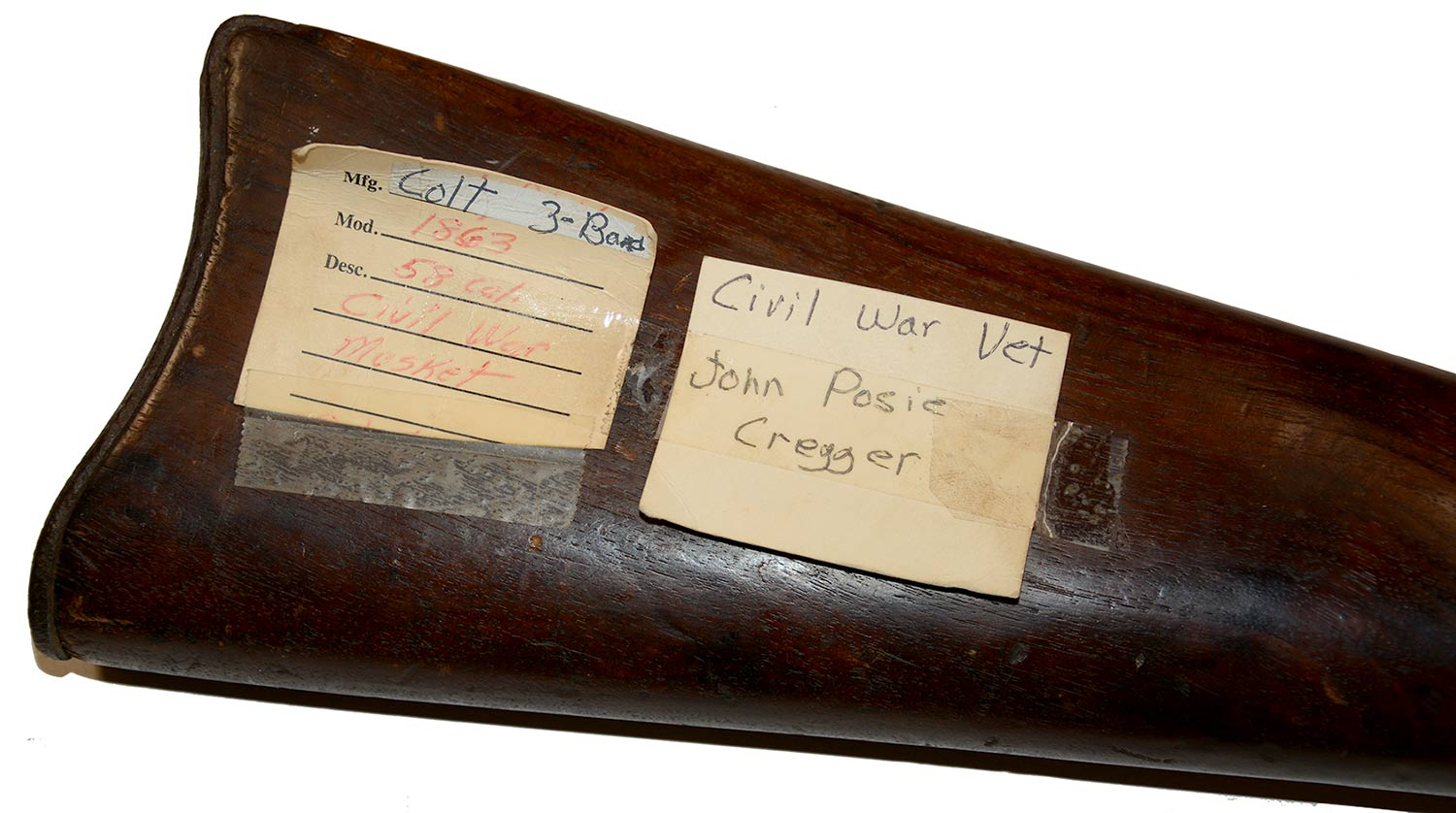
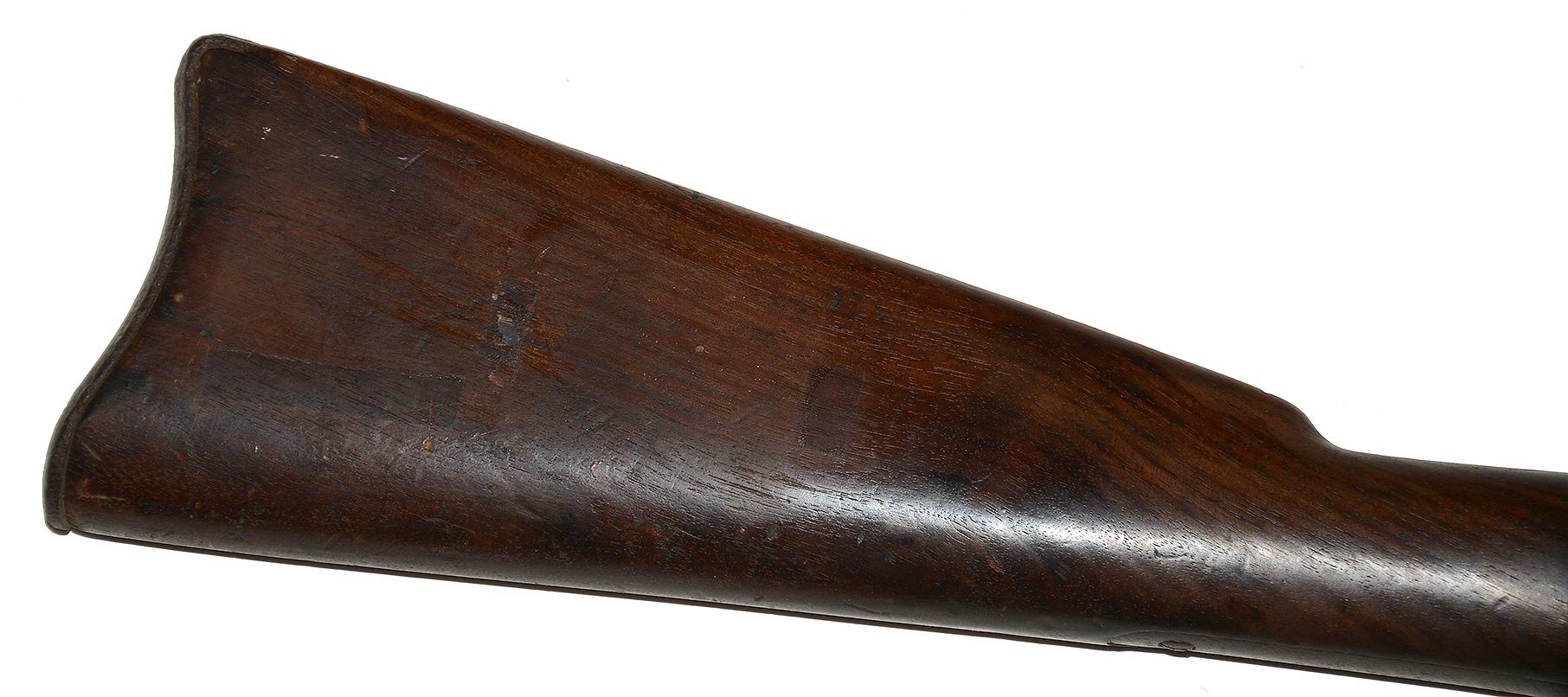


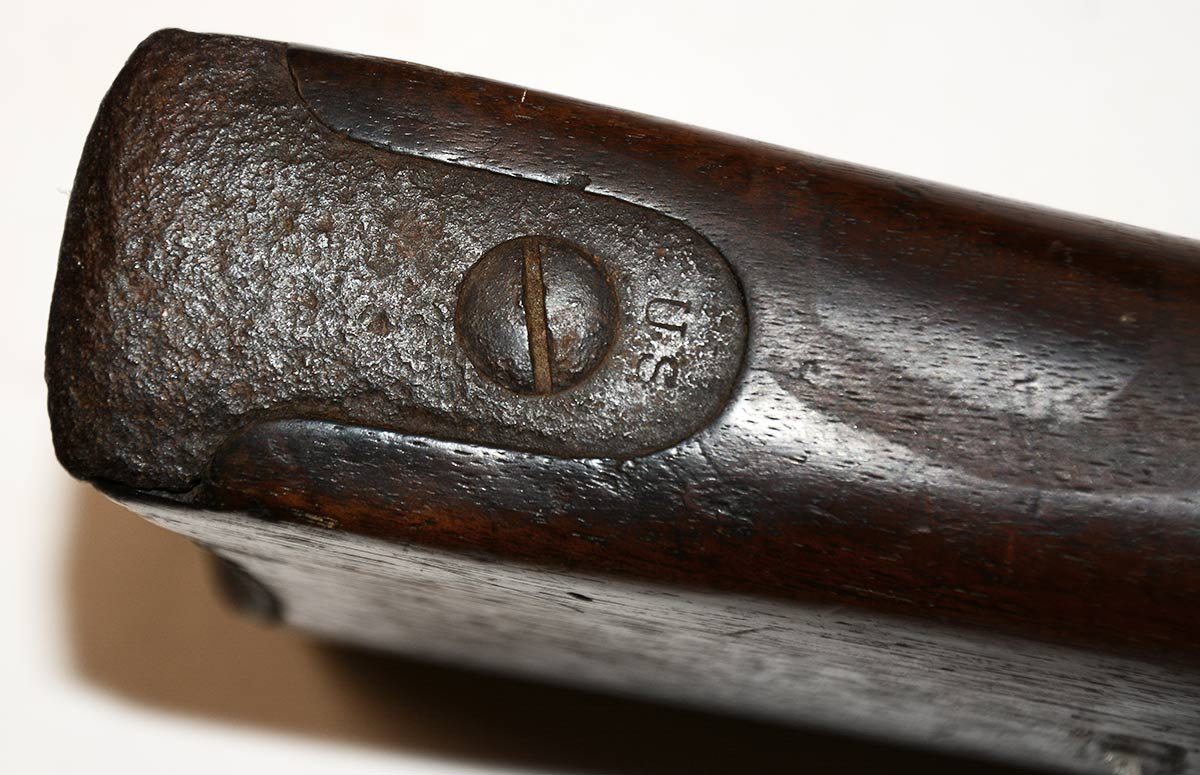
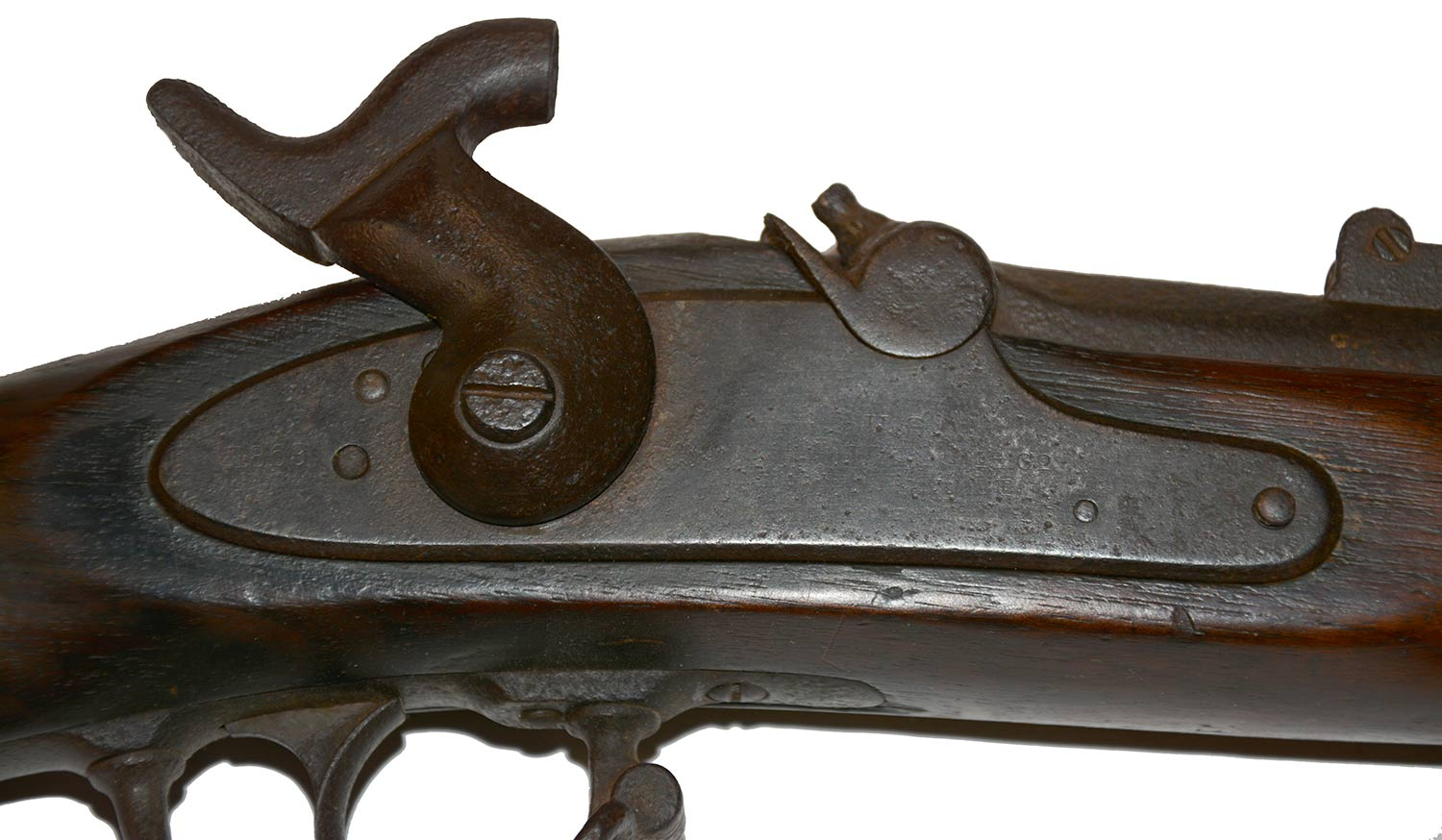


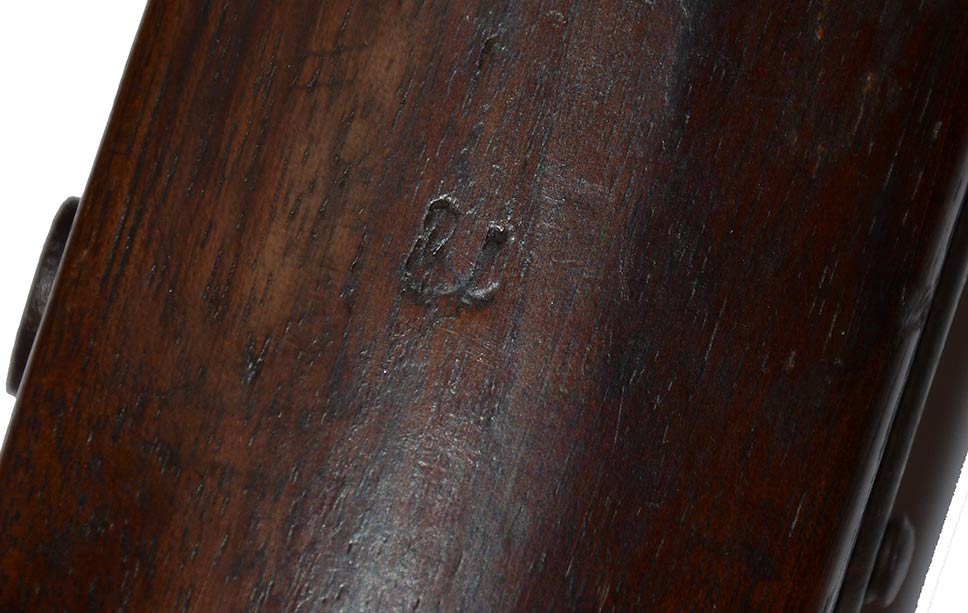
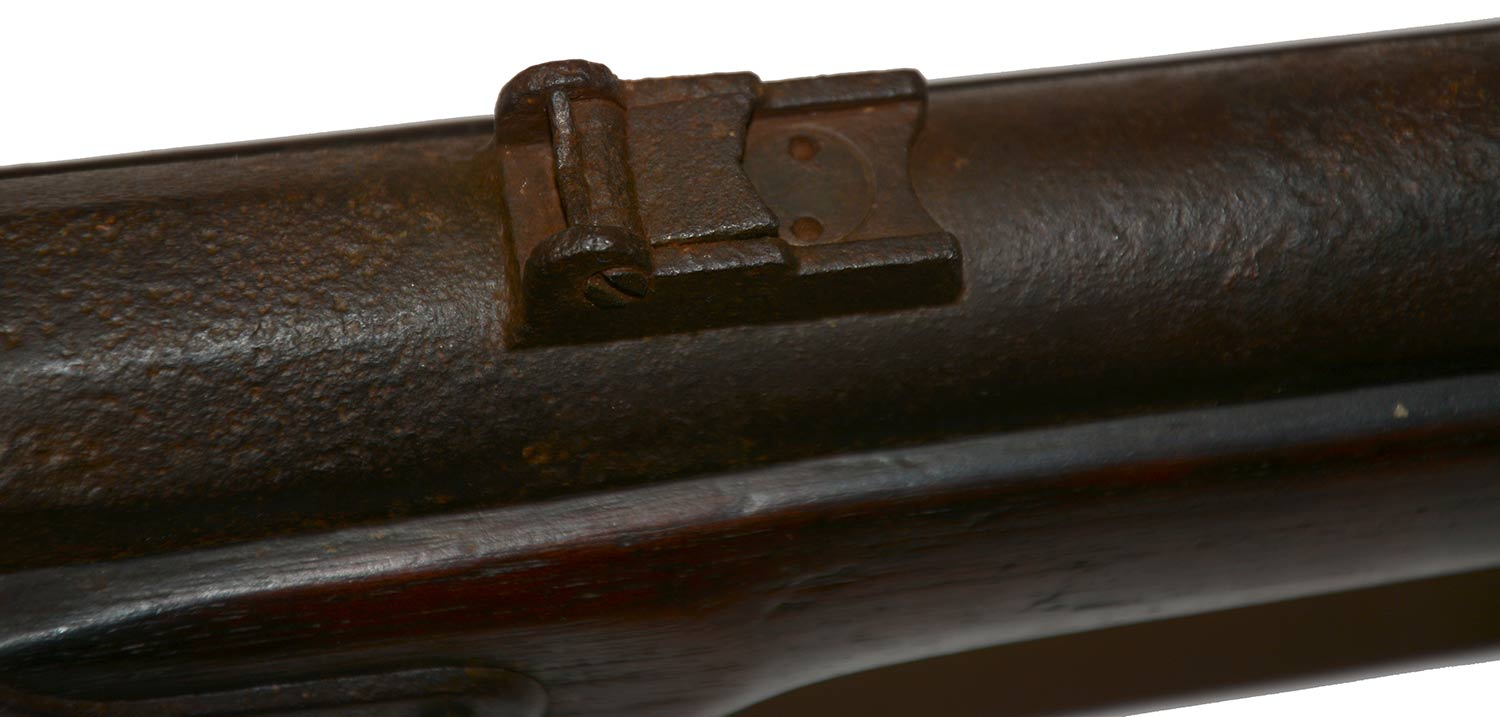
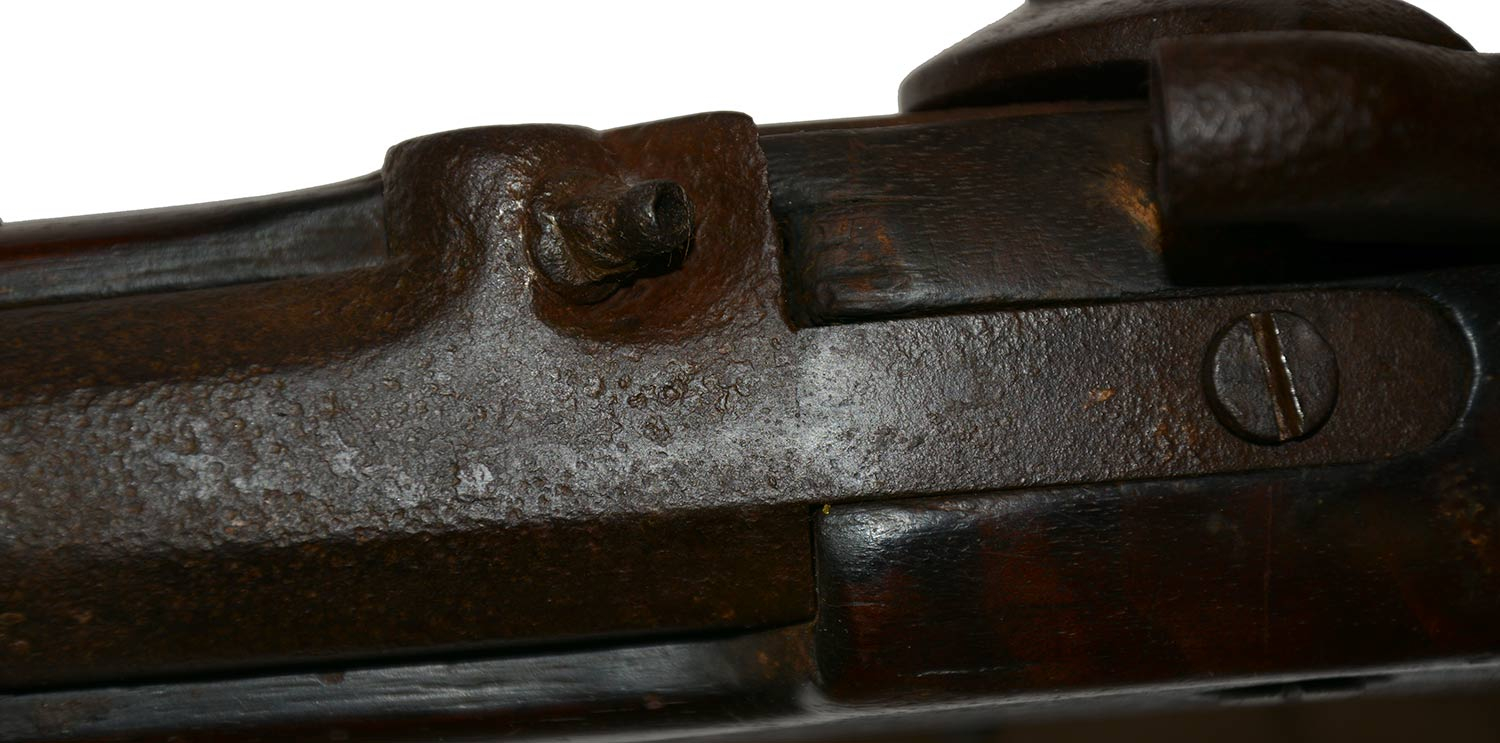
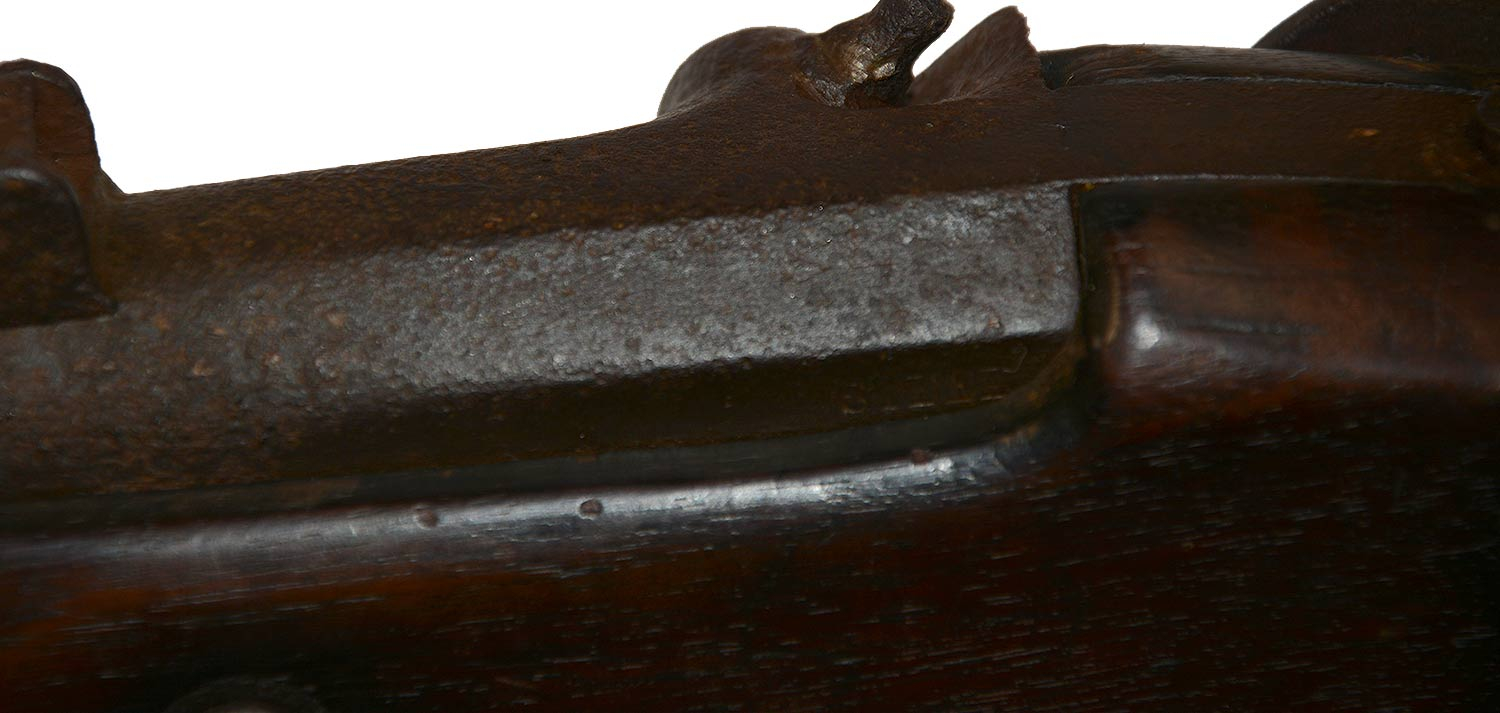
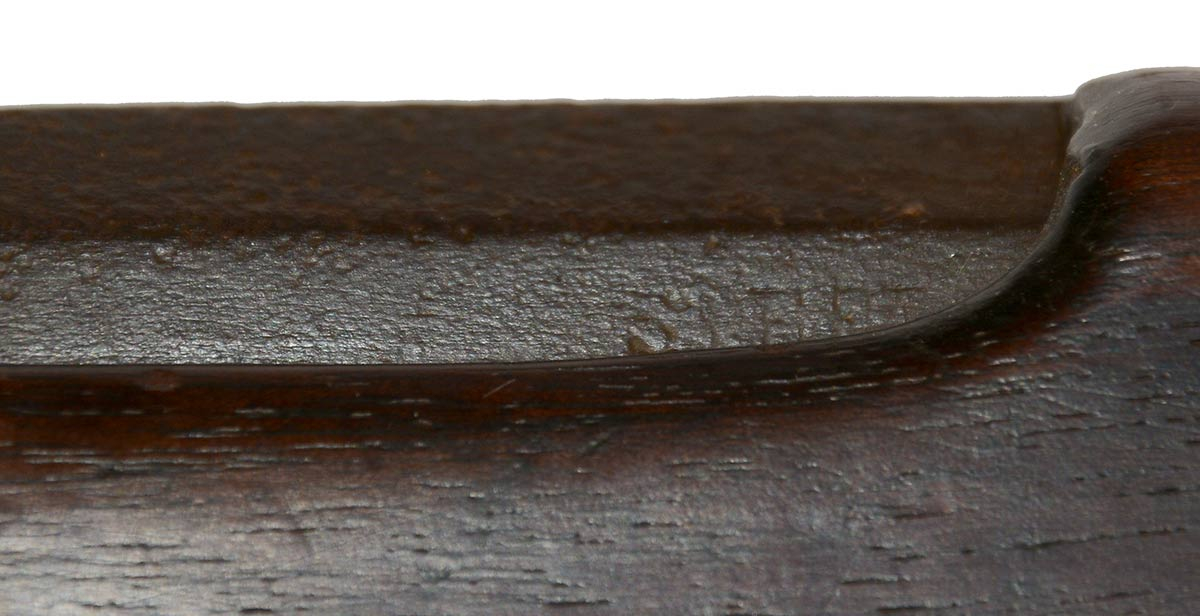

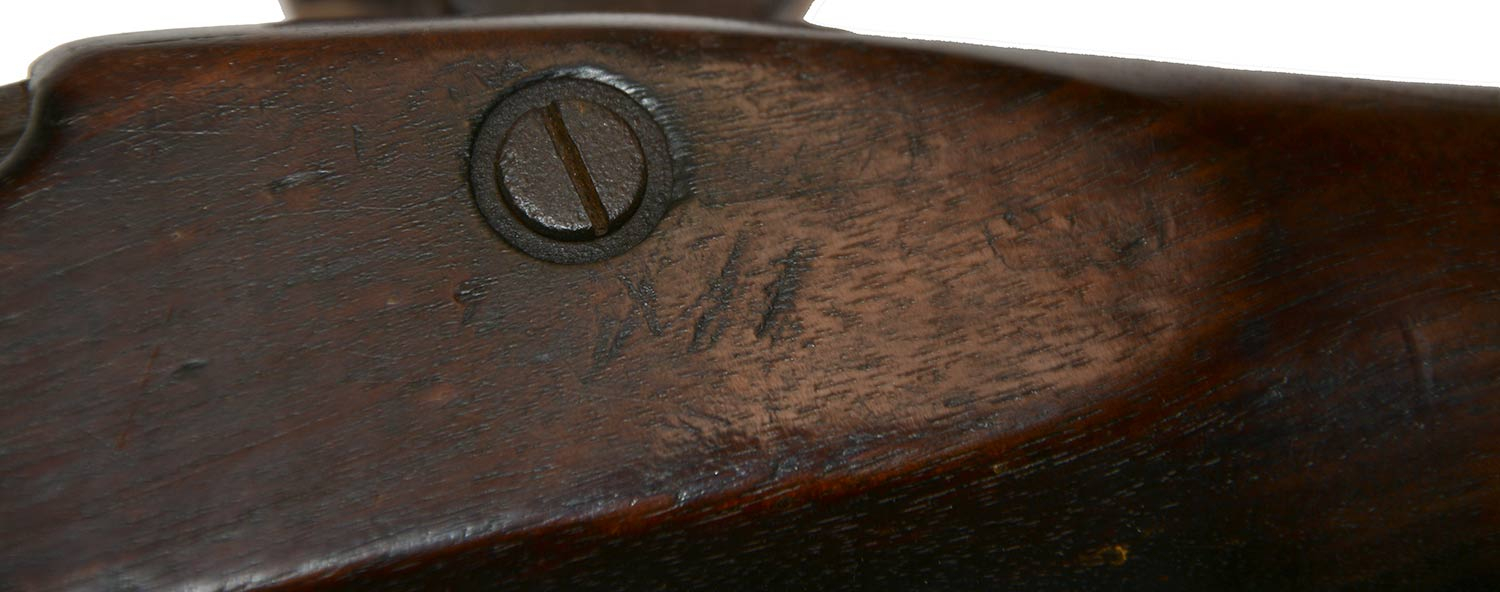
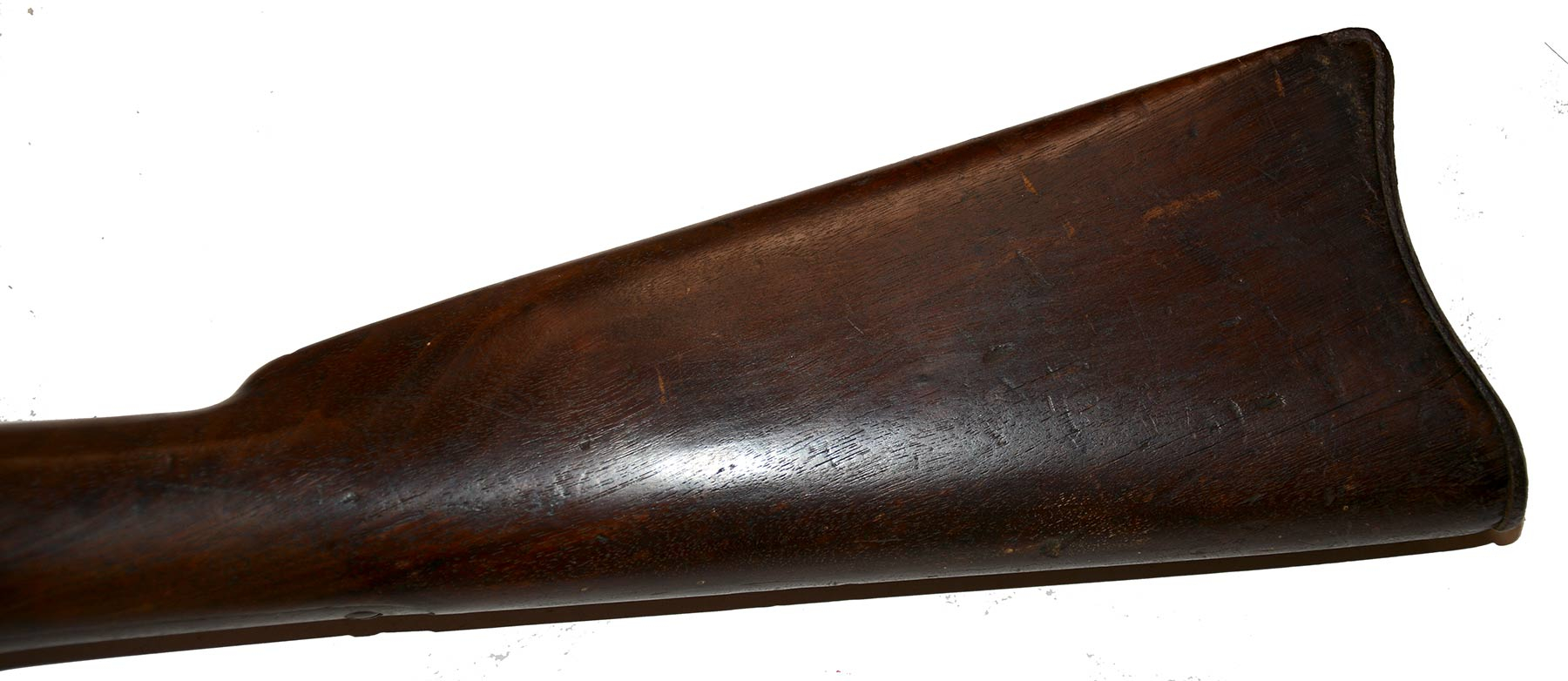

$2,450.00 SOLD
Quantity Available: None
Item Code: 218-599
This is a very well used Civil War Colt Special Model 1861 rifle musket that shows its age but is identified to a Virginia Confederate veteran by an old collection tag and bears just in front of the triggerguard the ampersand (‘&”) stamp now recognized as one of those used by C.S. ordnance inspectors working in the Confederate cleaning and repair system on arms that had been captured or collected on battlefields that fell under Confederate control and were to be reissued to Confederate troops.
Steven Knott first identified these markings as belonging to CS Ordnance inspectors in “Captured and Collected” Confederate Reissued Firearms” in 2019. He estimated that as many as 200,000 firearms gathered by CS Ordnance teams or civilians were placed into the Confederate cleaning and repair (“C&R”) system for reissue to Confederate troops, along with perhaps another 50,000 turned in by Confederate units. Most of these were in the eastern theatre, where Confederate victories left battlefields in southern hands, and the guns went through the process at Danville, Staunton, Lynchburg, or Richmond. Knott’s original catalog of five letter marks designating different inspectors (A,F,Q,T,Z) has expanded slightly to include a “D” and also this “&” stamp, the ampersand clearly showing the letters may not represent inspectors’s actual initials.
This Colt Special Model 1861 .58 Caliber Rifle Musket bears a visible 1863 date on the lockplate, indicating it is one of 47,000 delivered to the U.S. government that year, and possibly early that year: the left barrel flat is marked “STEEL,” commonly found on 1862-dated Colt rifles. Colt had approached the U.S. Chief of Ordnance on May 13, 1861, for some of the new M1861 rifle muskets as a patterns for production, but the official pattern had not yet been adopted and Colt began producing a rifle musket for his initial contract of 25,000 that blended elements of the M1861 and the British P1853 rifle muskets. His pattern, in fact, included several improvements later adopted for the M1863, including a contoured hammer and direct vent that used a flat-faced bolster without cleanout screw and permitted a thinner lockplate, used clamping barrel bands that did away with springs, and made several other changes that also show up on rifle muskets made by Lamson, Goodman and Yale, and by Amoskeag because they were supplied with his patterns and gauges. Those differences prevented the “special model” from being fully interchangeable with the M1861, but arms were desperately needed. Colt delivered 8,005 in 1862, 47,000 in 1863, (and another 45,000 in 1864.)
This follows the standard configuration and is complete with all bands, swivels, rod, sights, etc., though the rear sight is missing its long leaf. The metal is brown and deeply pitted overall, showing use in the field and not much care after the war around the farm. Nevertheless, the mechanics are good and the bore, though dark, is clean and has visible rifling. The lockplate has shallow pitting and shows just light traces of the “U. S. / COLT’S PT F. A. MFG CO / HARTFORD, CT” markings forward, but preserves a very legible 1863 date at rear. The U.S. on the buttplate tang is visible but corroded. The “STEEL” marking on the left flat is mostly visible. The stock is full length and complete, with a good fit to the metal, and has good color, but does show handling marks, and rounding to the edges from use. The counterpane shows either a small set of initials or a “XII” near the rear lock screw, but also what looks like a faint cartouche just rear of it. The nipple and breech are heavily corroded, and the wood under the hammer, next to the nipple shows some burn out, perhaps from the corrosive “high-pressure” British percussion caps imported by the Confederacy combined with later poor care.
The rifle has two card labels simply taped to the right buttstock. One merely identifies it as a “Colt 3-band / 1863 / 58 cal. / Civil War Musket.” The other, in black ink and slightly unsteady hand, gives a provenance from, “Civil War Vet / John Posie Cregger.” The only viable candidate we turn up, north or south, and allowing for spelling variations, etc., is John Posey Crigger, born in Wythe County, Virginia 8/30/1835 and died in Tipton County, Tennessee 12/31/1901. More research could be done, but he would appear to be the John P. Crigger picked up in Confederate service records as having enlisted in Co. D 45th Virginia on May 29, 1861, at Wytheville, VA, to serve 12 months. That soldier shows up as absent sick, at home, from mid-July into November 1861, but present again by the end of December and seems to have been present all the way to November 1863: an April 1, 1864, muster roll lists him as “absent sick in Wythe county since Nov. 1, 1863,” opening up the possibility he acquired the gun in 1863 and took it home at that point since the regiment was serving the region, but Confederate records are notoriously incomplete and he may have returned to the ranks, but his file contains no further record. We do note, however, a “John Crigger/Cricker/Creager” appears in Company B of the 45th starting in April 1864, said to have enlisted for two years on March 31, making it possible he had returned and changed companies. That man was captured at Piedmont, VA, June 5, 1864, exchanged in March 1865, and last recorded at Richmond’s Chimborozo Hospital with the note “p.p.” perhaps meaning paroled prisoner.
The 45th is an interesting regiment, organized by former VA Governor John B. Floyd in his role as militia general and commanded by Henry Heth as Colonel. They fought in western Virginia in 1861, were present at Carnifex Ferry and took part in campaigning against Rosecrans. They joined A.S. Johnston in Tennessee in early 1862, but returned to southwest Virginia in April, saw action at Giles Courthouse, Fayetteville, and Charleston. In 1863 they continued to serve in southwestern Virginia, protecting the area around Saltville and were heavily engaged at White Sulphur Springs in August, and served briefly again in Tennessee in the wake of Chickamauga, but soon returned again to Virginia to protect the railroad lines and the valuable the salt and lead mines around Saltville and Wytheville, fighting at Cloyd’s Mountain in May 1864, losing 26 killed and 96 wounded. At Piedmont, on June 5, they fought under “Grumble” Jones against Union general Hunter, who was tasked with destroying Confederate resources in the Shenandoah. The battle ended with a rout of the Confederate forces, with 45th losing, in addition to killed and wounded, some 325 captured, among whom was the John Crigger of Company B. The regiment went on to serve under Early in the Army of the Valley, fighting at Monocacy, Kernstown, Opequon, Fisher’s Hill, Cedar Creek, and lastly Waynesboro in 1865.
Confederate “captured and collected” arms are an interesting part of the Confederacy’s efforts compensate for its lack of resources and manufacturing abilities in a very organized and systematic way. This would fit well in a collection of those arms, but also in a display related to the struggle over the counties of western Virginia and the resources of the Shenandoah that both armies recognized as critical. [sr] [ph:L]
DISCLAIMER: All firearms are sold as collector's items only - we do not accept responsibility as to the shooting safety or reliability of any antique firearm. All firearms are described as accurately as possible, given the restraints of a catalog listing length. We want satisfied customers & often "under" describe the weapons. Any city or state regulations regarding owning antique firearms are the responsibility of the purchaser. All firearms are "mechanically perfect" unless noted, but again, are NOT warranted as safe to fire.
~~~~~~~~~~~~~~~~~~~~~~~~~~~~~~~~~~~
THIS ITEM, AS WITH ALL OTHER ITEMS AVAILABLE ON OUR WEB SITE,
MAY BE PURCHASED THROUGH OUR LAYAWAY PROGRAM.
CLICK HERE FOR OUR POLICIES AND TERMS.
THANK YOU
Inquire About “CAPTURED AND COLLECTED” COLT SPECIAL MODEL 1861 RIFLE DATED 1863, FROM THE ESTATE OF CS VETERAN JOHN POSEY CRIGGER, 45th VIRGINIA
Most Popular
Historical Firearms Stolen From The National Civil War Museum In Harrisburg, Pa »
Theft From Gravesite Of Gen. John Reynolds »
Selection Of Unframed Prints By Don Troiani »
Fine Condition Brass Infantry Bugle Insignia »
Large English Bowie Knife With Sheath 1870’S – 1880’S »
Imported (Clauberg) Us Model 1860 Light Cavalry Officer's Saber »
featured item
US MARINE CORPS OFFICER’S ENGLISH MADE MAMALUKE WITH IVORY GRIP
Manufactured: England Maker: Unmarked Year: C1820-25 Model: Mamaluke Size: 35.8 inch blade, 1.21 wide Condition: Excellent+ Tri-color blade - blue, gold and "white" of flat design. Ship's Mast, American Eagle, Standing Indian figure and… (870-76). Learn More »


